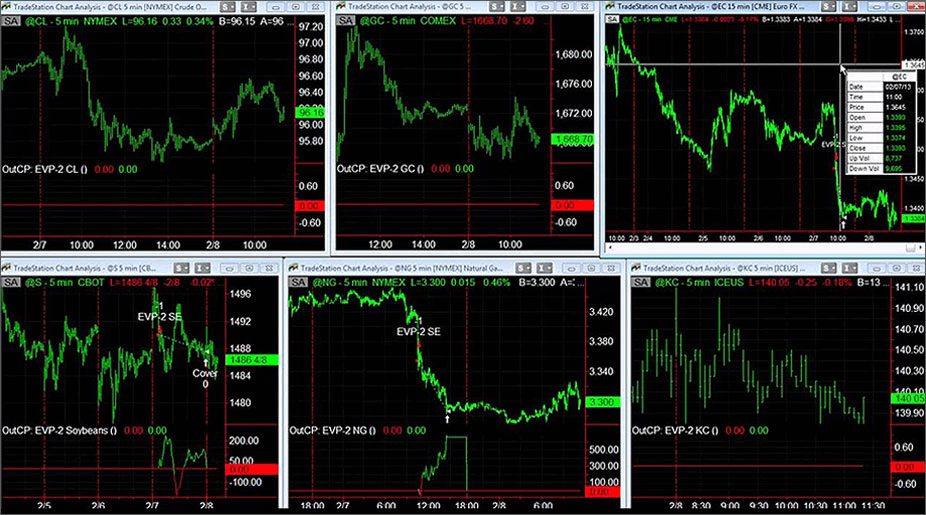

In the table, we included the prices of the NKVI and N225 indices. **Japanese futures fees differ for each stock index. *Extra fees, like securities transaction tax, exchange charges, and service tax may be charged. Similarly to options, you pay commissions based on the number of contracts you trade. TradeStation Global stock index futures commission of 10 contracts TradeStation Global's futures fees are low. SGD-denominated stock options: SGD 7.50 / contract JPY 150.00 minimum for stock index options N225 index options: 0.018% of the option value

Stock index options: INR 22.50 per board lot Stock index options: HKD 45.00 / contract Stock options: 0.30% of the option value (+ HKD 3.00 per contract exchange fee) TradeStation Global stock index options commission of 10 contracts TradeStation Global's options fees are high versus the overall market, but still much lower than what Saxo or Swissquote charges. The bond commissions are volume-tiered, with a minimum fee. TradeStation Global commission of a $10,000 government bond trade TradeStation Global has generally low bond fees. US funds have a $25 transaction fee per trade, while the commission for European mutual funds is 0.12% of the trade volume, with a €2 minimum. TradeStation Global commission for a $2,000 fund purchase We calculated the fees for US mutual funds. TradeStation Global's fund fees are high. The forex fees are comprised of commissions, which are calculated as 0.006% of the trade volume, with a minimum charge of $2. TradeStation Global forex benchmark fee of a $20,000 30:1 long position held for one week This catch-all benchmark includes commissions, spreads and financing costs for all brokers. To get a clear picture on forex fees, we calculated a forex benchmark fee for major currency pairs. TradeStation Global's forex fees are average. TradeStation Global's margin rates are in line with other brokers, however, we'd like to point out that they add a 2.5% markup to Interactive Brokers's rates. It can account for a significant portion of your trading costs. You have to pay interest on this borrowed money – the interest rate is called the margin rate. Trading on margin basically means that you borrow money from your broker and can purchase more shares than you could with just the available cash in your account. If you prefer stock trading on a margin, you should check TradeStation Global's margin rates. TradeStation Global stock fees Marketīelgium, France, Germany, Italy, Netherlands, Portugal For US and Canadian stocks, however, the commission is based on the number of shares traded. TradeStation Global charges fees mostly as a percentage of the traded volume. TradeStation Global stock and ETF commission of a $2,000 trade TradeStation Global has generally low stock and ETF commissions. The forex and options fees are average, while trading with mutual funds and CFDs are expensive. TradeStation Global has low stock, ETF, and futures. To have a clear overview of TradeStation Global, let's start with the trading fees. See a more detailed rundown of TradeStation Global alternatives.

This selection is based on objective factors such as products offered, client profile, fee structure, etc. We also compared TradeStation Global's fees with those of two similar brokers we selected, Saxo Bank and Swissquote. For example, in the case of stock investing the most important fees are commissions. In the sections below, you will find the most relevant fees of TradeStation Global for each asset class. Non-trading fees include charges not directly related to trading, like withdrawal fees or inactivity fees.These can be commissions, spreads, financing rates and conversion fees. What you need to keep an eye on are trading fees and non-trading fees. We ranked TradeStation Global's fee levels as low, average or high based on how they compare to those of all reviewed brokers.įirst, let's go over some basic terms related to broker fees. There's no inactivity fee and the first withdrawal each month is free. TradeStation Global has low trading fees, especially for stocks and ETFs.


 0 kommentar(er)
0 kommentar(er)
